Our dying Chalan beel
Imagine vast, shimmering water reflecting a clear blue sky. Boats glide across the surface, carrying villagers through a network of rivers and canals teeming with life. Schools of fish, like silver flashes, dart beneath the water.
Today, that image is a fading memory.
The water, once ever-present, has receded. The sky, now without flocks of white herons, is a harsh reminder of the ecological decline.
This is the story of Chalan beel, spanning over 11 upazilas across Pabna, Rajshahi, Naogaon and Bogura.
A 1909 survey showed the waterbody flowed across 1,085 square kilometers. By 1940, that number had shrunk to 705 square kilometers, a decline of over 35 percent in just three decades.
Now, by government estimates, the waterbody is only limited to 375 sq km.
Private estimations are even bleaker. According to Banglapedia, the current area of Chalan beel is 168 sq km.
On average, the area of the beel is shrinking by 1.83 percent per year.
Experts believe the name "Chalan beel" comes from "Chalanta Beel", meaning "moving" or "flowing beel". The beel's formation is linked to the ever-changing course of the Jamuna river.
Unplanned development works have accelerated its decline.
Silt has accumulated over the extensive network that once fed Chalan beel -- 32 rivers, 93 beels and 26 canals. Meanwhile, encroachment and garbage dumping have gradually killed these waterbodies.
It keeps getting worse.
Even groundwater sources in Chalan beel area have dwindled due to excessive use.
The irony is stark. An area historically defined by its abundance of water is now struggling to retain even its ground water.
So, what happened?
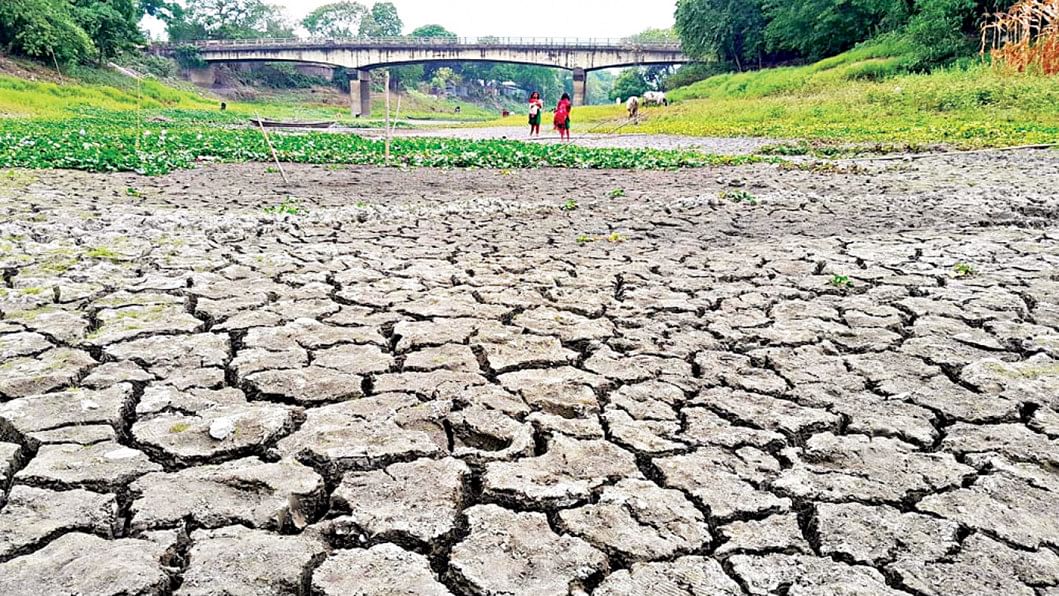
THE CURSE OF DEVELOPMENT
In 1914, after the British government constructed a railway line cutting across Chalan beel from Sirajganj to the Hardinge Bridge, the natural flow of water began to decline.
In 1980, the Baghabari-Tarash flood control embankment severely disrupted its water flow, said environmentalists and locals.
Since then, various development projects have been implemented one after another within the beel.
A review of government development projects from the 1995-96 fiscal year to the 2009-10 fiscal year reveals that in 15 years, 1,188.5 kilometers of paved roads, 113 bridges, 855 culverts, 90 growth centres and 21 sluice gates have been constructed in Chalan beel.
In 2003, the construction of the Nalka-Bonpara highway in Sirajganj also caused severe obstructions to the water flow, said Md Mizanur Rahman, the founder of Chalanbeel Rakhkha Andolan.
The construction of numerous roads around this highway has impeded the beel's water flow in various places, he claimed.
Additionally, the mouths of canals and rivers have been blocked with numerous structures, causing water movement to be hindered and silt to accumulate, rapidly filling up the beel and reducing its depth, said Mizan.
The latest blow to the existence of Chalan beel, one of North Bengal's significant natural diversities, has come from pond excavation. The excavation of ponds has disrupted the natural water flow.
In just 12 years, at least 8,000 to 10,000 ponds have been excavated across the vast expanse of Chalan beel.
DYING RIVERS
Eight rivers connected to the Chalan beel -- the country's largest wetland spanning across Sirajganj, Natore and Pabna districts -- have nearly been destroyed due to the construction of roads, regulators and sluice gates, according to a report by Bangladesh Poribesh Andolon in 2023.
Take the case of the Boral river for example.
A 2018 National River Conservation Commission report said at least 18 kilometres of the river has been lost due to encroachment. The Daily Star ran a report in 2021 detailing how even public entities set up illegal structures on the river land.
The Boral also bears the brunt of mindless garbage dumping and construction of unplanned sluice gates.
Eight municipalities in four districts, along with local industries, dump waste into the river.
Originally, the river was over 500 feet wide, but the construction of narrow sluice gates and dams has reduced the water flow significantly.
In 1985, the construction of a sluice gate at the source of the Boral in Charghat, Rajshahi, resulted in the river losing water flow. Since then, Chalan beel has also started drying up.
A 2018 feasibility study conducted by the water resources ministry recommended removing illegal structures, reconstructing sluice gates, and dredging the river to restore water flow and navigability.
The study also highlighted the need to prevent untreated sewage from being discharged into the river.
According to Bangladesh Agricultural Development Corporation, most of the 21 rivers in the Pabna, Natore, and Sirajganj sections of the beel are now filled with silt.
It has 71 canals and drains spanning 410 kilometers. Around 66,240 farmers used to get irrigation water from these canals and drains.
Currently, 368 kilometers, or 90.24 percent of these canals and drains are silted up. Efforts are underway to dredge and restore the remaining 42 kilometers to restore navigability, according to officials.
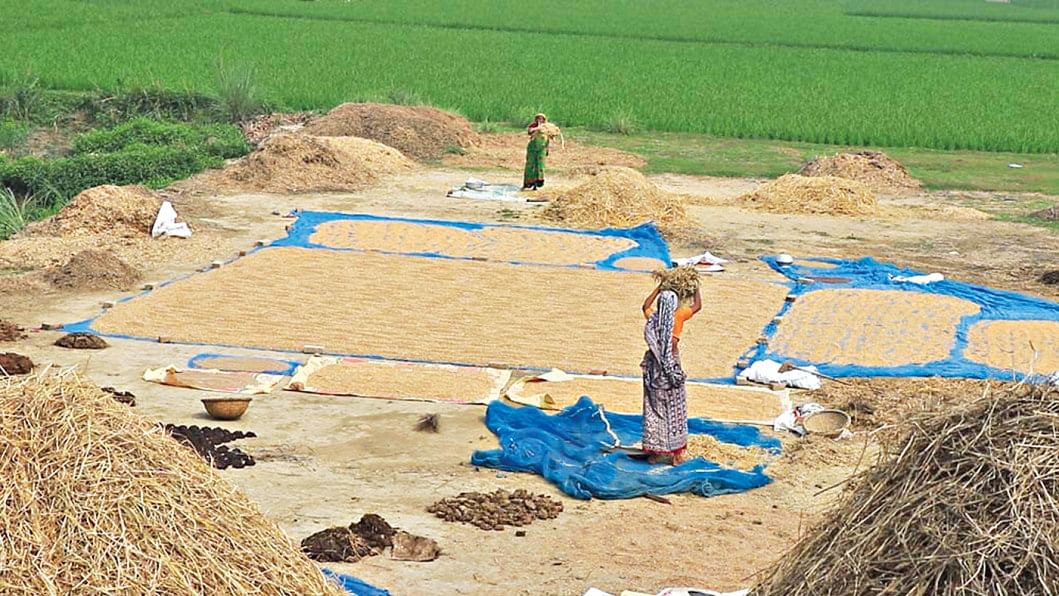
DISAPPEARING FISH SPECIES
In the 1980s, Chalan beel was a thriving habitat for a wide variety of fish species, including rui, katla, mrigal, shol, boal, chitol, koi, pabda, silong, magur, shing, gochi, baim, bata, khashla, nandai, taki, chela, chapila, puti, mola, banshpatari, boumach, bele, deshi chanda, mola, dhela, tengra, kakila, shrimp, and batashi.
However, around 80 species of fish have become extinct. The extensive use of chemical fertilisers and pesticides, along with natural changes, has led to the decline of many fish and other eco-friendly species.
Around 52 fishers have left the profession from 1982 to 2006, according to a survey titled "Chalan beel in Bangladesh: Habit, biodiversity degradation and implications for future management".
An additional 19 species of fish are in risk of extinction, the survey added.
In 1982, fish production in Chalan beel was 26,990 tonnes.
This decreased to 24,336 tonnes in 1987, 18,700 tonnes in 1992, 15,421 tonnes in 1997, 12,460 tonnes in 2002 and 12,117 tonnes in 2006.
In 2012, it further dropped to 11,999 tonnes.
According to a research paper (IOSR journal) of Nahida Sultana and M Nazrul Islam of Rajshahi University, total fish production in Chalan beel has declined by 45 percent from 1982 to 2012.
The average production has declined by at least 12.1 percent per year.
The Pabna District Fisheries Office reports that as natural fish production declines, there is a corresponding increase in fish farming in artificially dug ponds.
"A few decades back, we would catch a significant amount of fish by casting nets in the beels or rivers of Chalan beel. There were times when we couldn't even manage to carry all the fish we caught. Nowadays, the natural fish population has declined drastically due to the prevalence of artificial fish farming," said Subal Haldar, a fisherman from Kumargara village of Pabna's Chatmohar upazila.
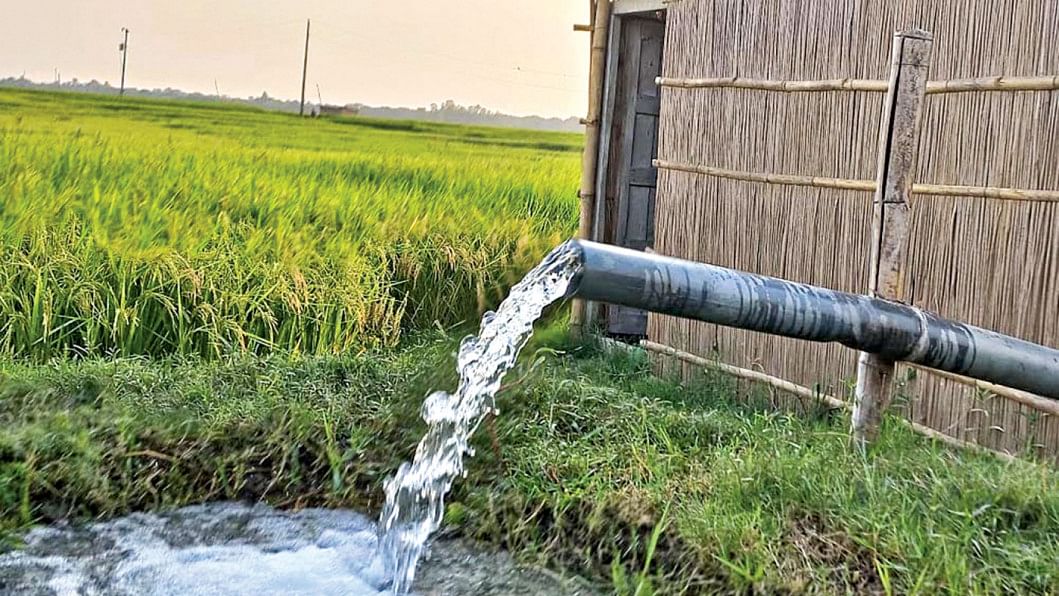
GROUNDWATER DEPLETION
Farmer Saidur Rahman from Kholishagari beel in Pabna's Chatmohar upazila, started farming back in the 90s. He now finds it difficult to access sufficient water for his fields.
"In the 90s, when I first installed a shallow pump, I could find water at depths of 12 to 13 feet below the ground. But this year, I had to dig down to 32 feet to reach water," Saidur said.
Over the past three decades, the water level has dropped below 20 feet, if not more.
"Currently, I need to operate the mechanical pump for two to three hours to irrigate just one bigha of land whereas a few years ago, one hour was sufficient," Saidur added.
Farmers across Chalan beel echoed him.
Mizanur, founder of Chalanbeel Rakhkha Andolan, said over 7,000 deep tube wells, 100,000 shallow tube wells, and more than 700,000 to 800,000 submersible pumps have been extracting groundwater across the vast Chalan beel region, none of which have been properly installed.
The haphazard installation of pumps and the rampant extraction of groundwater have led to a drastic decline in ground water level.
In Tarash upazila, covering 25,490 hectares of land, crop cultivation depends entirely on 10,190 shallow pumps and 84 deep tube wells, said Md Abdullah Al Mamun, upazila agriculture officer.
SAVE RIVERS, STOP UNPLANNED DEV
According to Dr Md Nazmul Islam, associate professor of Geology at Pabna University of Science and Technology and a researcher, said almost all the major rivers feeding the Chalan beel are in a precarious situation due to encroachment, pollution and unplanned construction of embankments and sluice gates.
"These rivers must be saved to protect Chalan beel," he added.
He also called for bringing installation of subversive pumps under regulation to prevent further depletion of groundwater.
Citing data collected from three weather centers in the Chalan beel region, Nazmul said weather patterns have changed significantly over the past 100 years.
Average rainfall has decreased, while the temperature has risen up.
The fluctuating weather pattern also leads to decreased oxygen levels in the water, affecting fish population, increasing humidity and also damaging crops, he added.


 For all latest news, follow The Daily Star's Google News channel.
For all latest news, follow The Daily Star's Google News channel. 

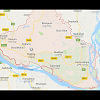


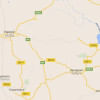

Comments